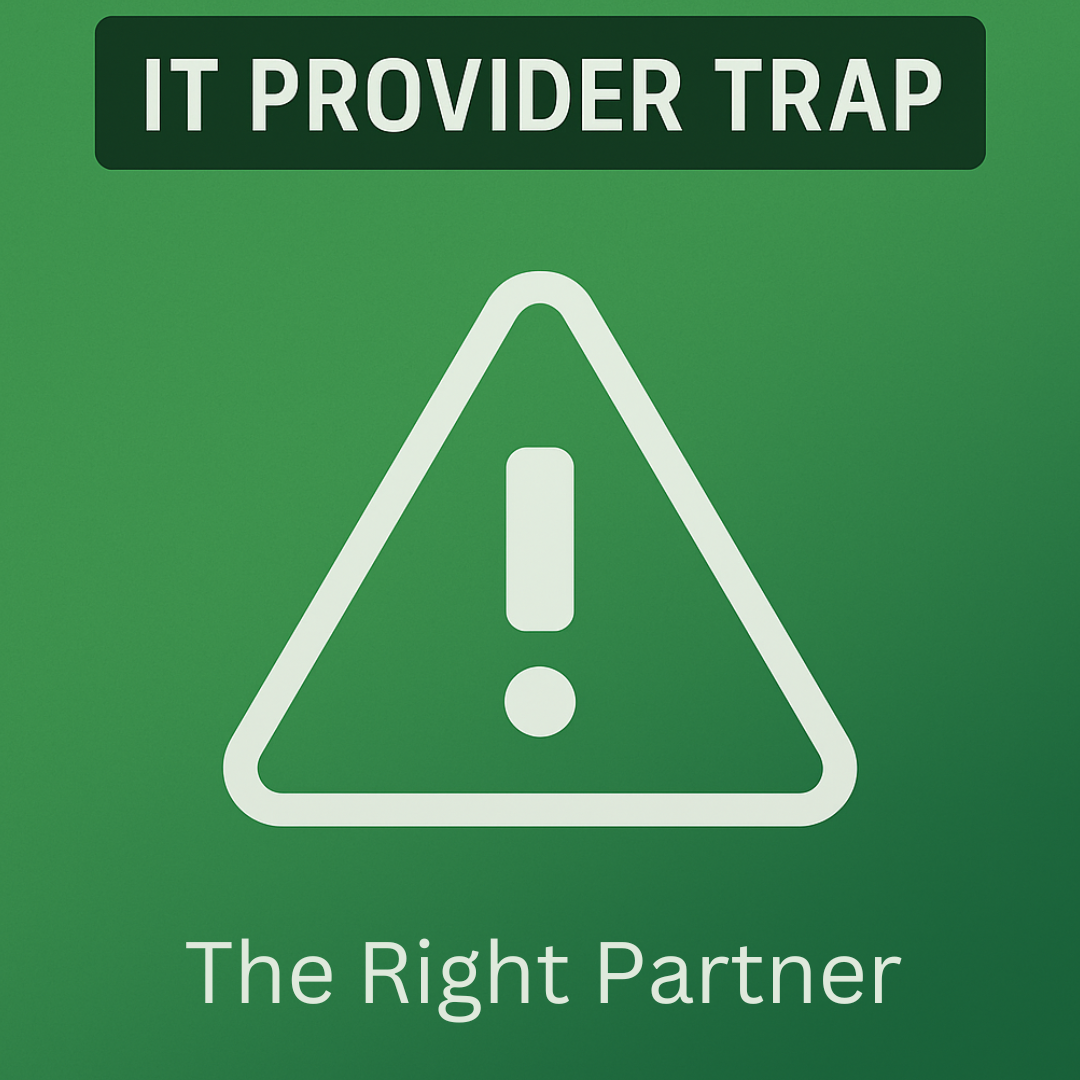After all the red flags we’ve covered, let’s finish strong—with what good looks like.
Because the goal isn’t just to avoid disaster. It’s to find a partner who helps you grow, adapt, and lead with confidence.
1) Clear, upfront expectations—including how they’ll support you if things go south
A good provider lays it all out from the beginning:
- What’s included and what’s not
- How support works and how to escalate
- How planning and budgeting are handled
- And—importantly—how they’ll help if the partnership needs to end
Some solid providers do use longer contracts. But they won’t punish you for leaving. They’ll document your setup, assist with a smooth transition, and keep things professional. Ask them directly: What’s the exit process if we decide to move on?
2) A team structure that delivers continuity—not chaos
You don’t want to depend on one “go-to” tech who disappears on vacation. And you don’t want to get lost in a help desk where no one knows your name.
Ask how the provider structures their support team:
- Do they use small, consistent groups (like pods) that get to know your business?
- What’s the process if your usual tech is out?
- How is documentation handled so nothing falls through the cracks?
There are different ways to do this well—but they should have some plan to ensure you’re not stuck when someone’s unavailable or when context matters most.
3) Proactive communication—not just emergency responses
The best providers don’t wait for tickets to pile up before they check in. They:
- Flag risks and outdated systems before they become urgent
- Explain changes ahead of time—not after something breaks
- Show up for planning reviews and budgeting conversations
It’s not about weekly meetings—it’s about steady visibility and open lines of communication.
4) Strategy and security that actually evolve with you
A partner worth their salt helps you:
- Align your tech with business changes—like hiring, expansion, or new platforms
- Stay protected with layers of modern security, not just antivirus and wishful thinking
- Make decisions based on real needs, not pressure or panic
If you’ve never heard “here’s what we recommend for next quarter,” that’s a clue.
5) A culture of ownership, not excuses
Good teams:
- Own their mistakes and explain how they’ll do better next time
- Review incidents, update playbooks, and keep learning
- Actually improve behind the scenes—so support keeps getting better
If they always have someone to blame—or no answer at all—you’ll keep seeing the same problems.
Ask better questions, get better results
When evaluating a provider, skip the fluff and ask:
- How is your support team structured?
- What’s your backup plan if our main tech is unavailable?
- How do you keep documentation current and accessible?
- What happens if we need to transition away in the future?
- How do you help us plan for changes or growth?
Their answers will tell you more than any sales pitch ever could.
Final Thought: Choose a Partner, Not Just a Provider
The best IT partners help you get ahead, not just stay afloat. They’re curious, consistent, and committed to helping you build what’s next—not just fixing what’s broken.
Want the full checklist of red flags (and how to avoid them)? Grab the white paper:
The IT Provider Trap – How to Spot Danger Signs Before Your Business Pays the Price
Ready for a second opinion on your IT provider?
We’re happy to take a look—no pitch, no pressure. Just a real conversation about where you stand, what’s working, and where there might be risk.
